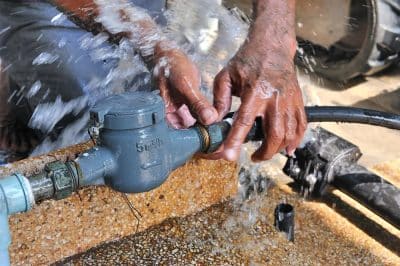
Rainy seasons bring more than just green lawns and blooming gardens; they genuinely challenge your home’s foundation. When water saturates the soil surrounding your house, it creates pressure that can slowly compromise even the sturdiest foundation. Many homeowners discover foundation problems only after significant damage has already occurred, and repair bills that could have been avoided had they acted sooner.
Water doesn’t simply vanish once rain stops; it continues to work against the stability of your foundation, causing structural damage throughout your home. Protecting your foundation before heavy rains begin is simpler and more affordable than addressing problems afterward. This guide offers practical tips to safeguard your foundation during rain and effective solutions for homes already damaged by water.
5 Tips to Protect Your Home’s Foundation During Rainy Months
Here are some practical tips to keep your home dry and secure during rainy months:
1. Check Your Foundation For Cracks
Small foundation cracks allow rainwater to enter your basement and cause damage which worsens over time. A thorough inspection of your floor and foundation walls can detect weak points that need immediate attention. Sealing these cracks with water-resistant materials creates a strong barrier against water intrusion. Performing this foundation repair early, before rainy seasons begin, prevents water from compromising your home’s integrity. Most foundation problems start small but grow exponentially if not addressed during multiple rainy seasons.
2. Clean Your Gutters and Downspouts
Gutters clogged with leaves and debris can’t move rainwater away from your house’s foundation properly. Regular cleaning prevents overflow that would otherwise drain down exterior walls and pool at your foundation. Downspout extensions must drain water at least five feet away from your house so it won’t erode the soil along your foundation. Most homes require gutter cleaning twice a year, with additional maintenance after major storms that have dropped heavy debris. Clean gutters channel thousands of gallons of water harmlessly away from your home each year.
3. Landscape Grading
Soil around your house should slope away from the foundation so water will not flow toward your home during rainstorms. Professional landscapers advise not planting large trees near foundations since the roots may disrupt soil stability and provide paths for water entry. Proper yard grading is still one of the best preventative measures against costly foundation repair needs resulting from water pressure and soil erosion.
4. Install a Sump Pump
Sump pumps collect excess groundwater and discharge it safely outside your home through drain pipes. Regular testing ensures your system will function properly when heavy rain saturates the ground around your foundation. Cleaning the pump intake screen prevents clogs that could cause system failure during intense rainy seasons. Battery backup systems provide continuous protection during power outages that usually accompany intense storms.
5. Have an Emergency Plan Ready
Keep emergency supplies like sandbags, plastic sheeting, and portable pumps on hand for quick use during unexpected flooding events. Having the contact information of water damage restoration and roof repair professionals where every household member can access it easily will be of great help if problems arise. Practice what to do during a water emergency so family members understand their roles and can respond quickly in case of flooding. A well-laid-out plan helps minimize damage and stress when extreme weather is threatening your home.
Steps to Take If You Experience Water Damage After the Rain
Here’s what you need to do when facing water damage in your home following heavy rainfall or flooding:
1. Ensure Safety First
Turn off the electricity to avoid shock hazards by accessing your circuit breaker if it’s safe to do so. Never stand in water while handling electrical systems, and contact an electrician if you’re uncertain about safety. If water has reached heating systems or gas appliances, consider turning off the gas supply to prevent carbon monoxide poisoning or other dangerous situations. Your family’s safety should be the absolute priority before attempting any cleanup or assessment.
2. Stop the Water Source
Identify where water is entering from broken pipes, roof leaks, appliance malfunctions, or clogged drains and halt it immediately to prevent further damage. For plumbing issues, locate and shut off your home’s main water valve to stop the flow. For weather-related floods where stopping water isn’t possible, focus on your safety and call professionals immediately.
3. Hire a Professional
Water restoration experts have advanced training and tools to handle complex water damage situations effectively, especially when dealing with contaminated water. Choose companies with IICRC-certified technicians who offer comprehensive services, including water extraction, drying, sanitizing, and restoration of damaged structures. Professional help can detect hidden moisture within walls, floors, and insulation, which might otherwise lead to mold and structural problems.
4. Dry the Area
Use fans, wet/dry vacuums, and air conditioners to remove moisture from affected areas all at once. Take wet items outside to dry or dispose of them if they’re beyond saving to prevent any growth of mold. For more severe water damage situations, professionals use heavy-duty equipment to drain water and dry out areas completely.
5. Replace Damaged Items
Water-damaged carpets and padding almost always need replacement, as they quickly harbor mold and mildew even after apparent drying. Wet drywall loses structural integrity and should be cut and replaced where it’s soaked to avoid hazards. Wood elements that have been exposed to water may need repair or replacement since they become susceptible to warping, rot, and structural collapse.
6. Call Your Insurance Provider
Call your insurance company immediately to start the process of filing a claim and find out what documents you’ll need to provide. Take detailed photographs and videos of all items damaged before, during, and after cleanup, along with making detailed lists of damaged items with approximate values. Remember that standard homeowners’ policies don’t cover flood damage unless you have special flood insurance.
7. Check for Mold
Mold begins growing within 24-48 hours following water exposure, causing health risks and additional property damage unless it’s removed quickly. Use professional dehumidifiers to remove hidden moisture from the walls, floors, and ceilings, even if visible water is no longer there. Consider professional application of mold-inhibiting treatments and testing after cleanup to ensure no harmful spores remain that make people suffer or cause long-term damage.
Protect Your Home From the Rain
Rain can damage your home unexpectedly, in ways you don’t notice until it’s too expensive to fix. By taking easy precautions now, you avoid the stress and expense later on. Inspect your foundation and repair minor issues before they get worse. Keep in mind that water always finds the path of least resistance; you just need to guide it away from your home. Having a complete rain protection plan gives you peace of mind during storms and ensures your greatest investment is secure for years to come. When you protect your home from rain, you’re not just fixing problems but creating peace of mind for the future.








